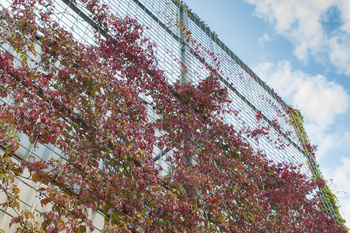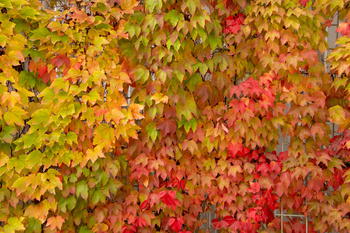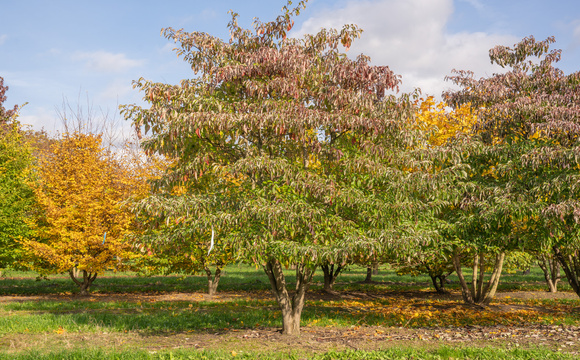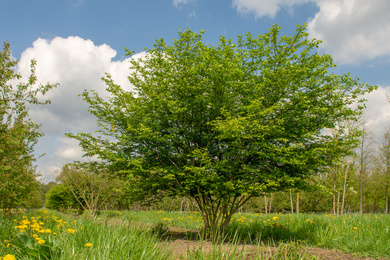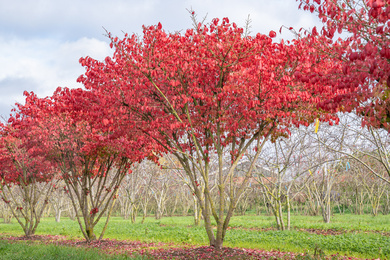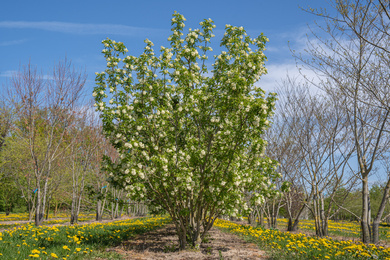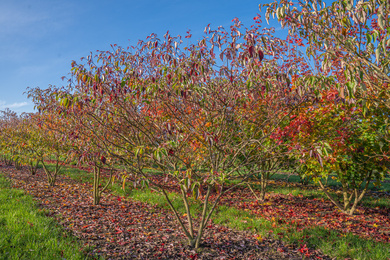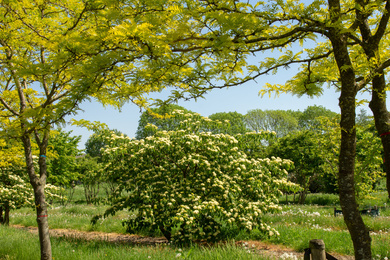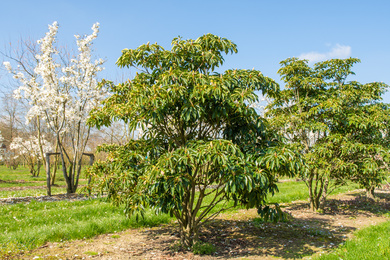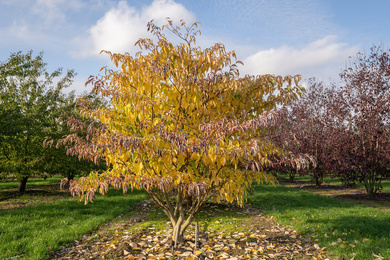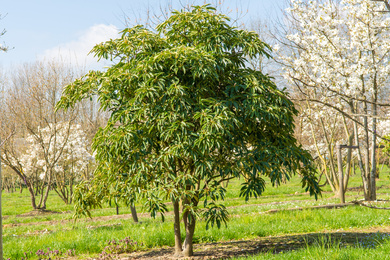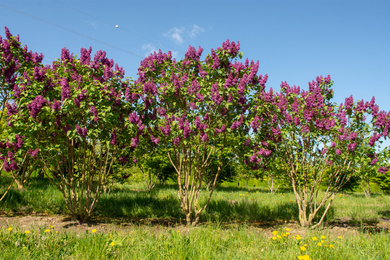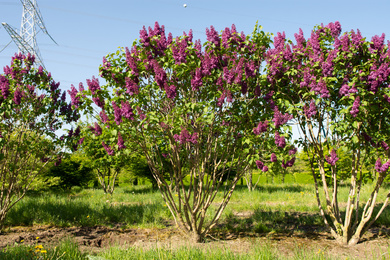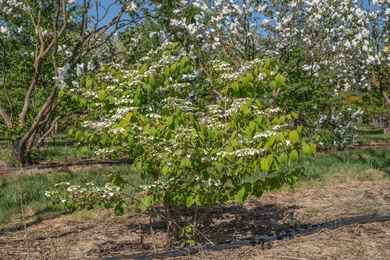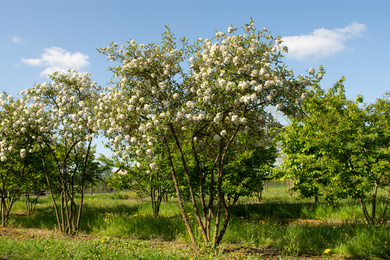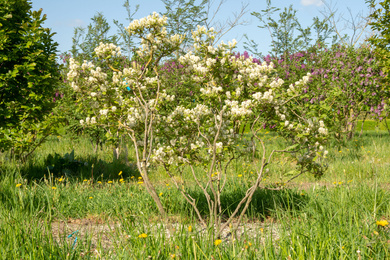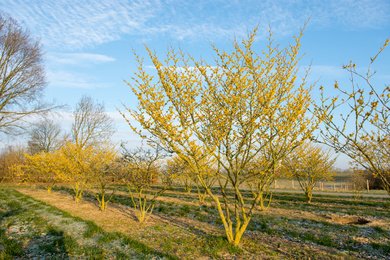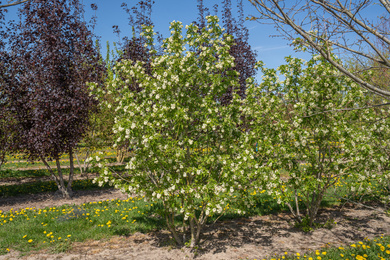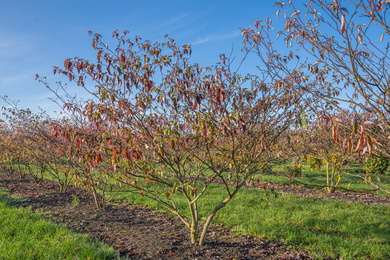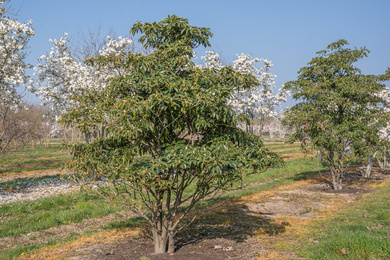Shrubs are woody plants, they do not have a continuous stem like a tree and they are visible throughout the year. With regard to uses, they come between perennials and trees and are perennial. Most climbing plants are also woody plants.
Shrubs and climbing plants
TreeEbb trees search tool
Find the right tree in the TreeEbb
Go to the TreeEbbShrubs in parks
Shrubs form a self-contained part of a planting plan in a park. Large groups of shrubs of hardy varieties are often planted in sections next to each other. In such a planting plan, the primary concern is the structuring value and less so the decorative value of the separate shrubs. In landscape design, shrub borders are established along park woodland in varied heights and structures and so form a connected whole with the edge of the woodland. Open shrub groups are often combined with lower, ground-cover park shrubs to achieve complete planting. Examples of frequently used shrub groups are rhododendron, hydrangea and cotoneaster.
Solutions for parks
Designs with shrubs
Shrubs are often included in designs singly, mixed or in groups. In borders shrubs are frequently alternated in combination with long-flowering perennials, often to create calm among the profusion of flowers. The underplanting in a shrub border generally consists of low and ground-cover varieties such as Euonymus or Lonicera, which may or may not be combined with ground-cover perennials such as Ajuga (bugle) or Epimedium (barrenwort).
Combine and make an impact
It is possible to make a genuine impact with an attractive choice of planting by strategically combining shrubs with the other planting. Variation is created by playing with the colour of the leaves or branches in comparison to the other planting. This is easy to achieve since shrubs are available in different heights and flower shapes. For intensively used locations such as a border in public gardens or embankment, often just a few varieties are chosen in order to be able to carry out a minimal level of maintenance efficiently.

Climbing plants
Climbing and espalier plants are trained against buildings, walls and along pergolas. With historical buildings, such as estates and castles, we also see them used in tree tunnels (berceau) and trellises. We distinguish between two types of climbing plants.
- Climbers with clinging roots: these are able to grow up against a wall on their own. Roots like vines grow against facades on their own.
- Climbers with winding tendrils: these require guides or supports such as a wire or trellis to which they can attach themselves. Examples are wisteria and clematis. Most climbing plants are woody plants and can get very old. It is advisable to combine the right climber with the right climbing aid. A wisteria can easily get to eight metres high, and therefore a small pergola will not be sufficient. It is wiser to opt for climbing plants of limited height such as Berchemia racemosa or Akebia quinata (chocolate vine). Self-clinging climbers can cause damage to buildings. Sound advice is also necessary when using climbing plants.
Make an appointment